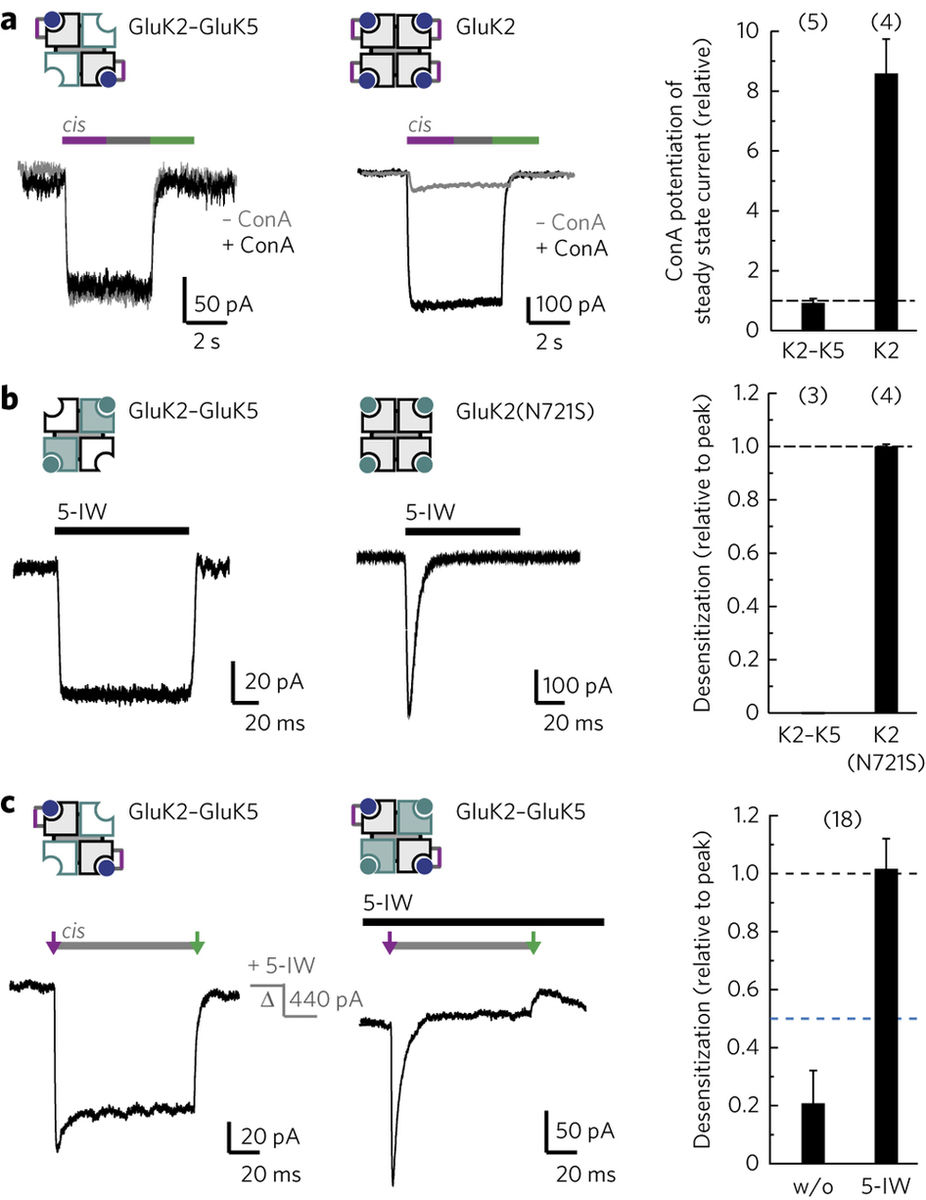
Tethered ligands reveal glutamate receptor desensitization depends on subunit occupancy
Abstract
Cell signaling is often mediated by the binding of multiple ligands to multisubunit receptors. The probabilistic nature and sometimes slow rate of binding encountered with diffusible ligands can impede attempts to determine how the ligand occupancy controls signaling in such protein complexes. We describe a solution to this problem that uses a photoswitched tethered ligand as a ‘ligand clamp’ to induce rapid and stable binding and unbinding at defined subsets of subunits. We applied the approach to study gating in ionotropic glutamate receptors (iGluRs), ligand-gated ion channels that mediate excitatory neurotransmission and plasticity at glutamatergic synapses in the brain. We probed gating in two kainate-type iGluRs, GluK2 homotetramers and GluK2–GluK5 heterotetramers. Ultrafast (submillisecond) photoswitching of an azobenzene-based ligand on specific subunits provided a real-time measure of gating and revealed that partially occupied receptors can activate without desensitizing. The findings have implications for signaling by locally released and spillover glutamate.